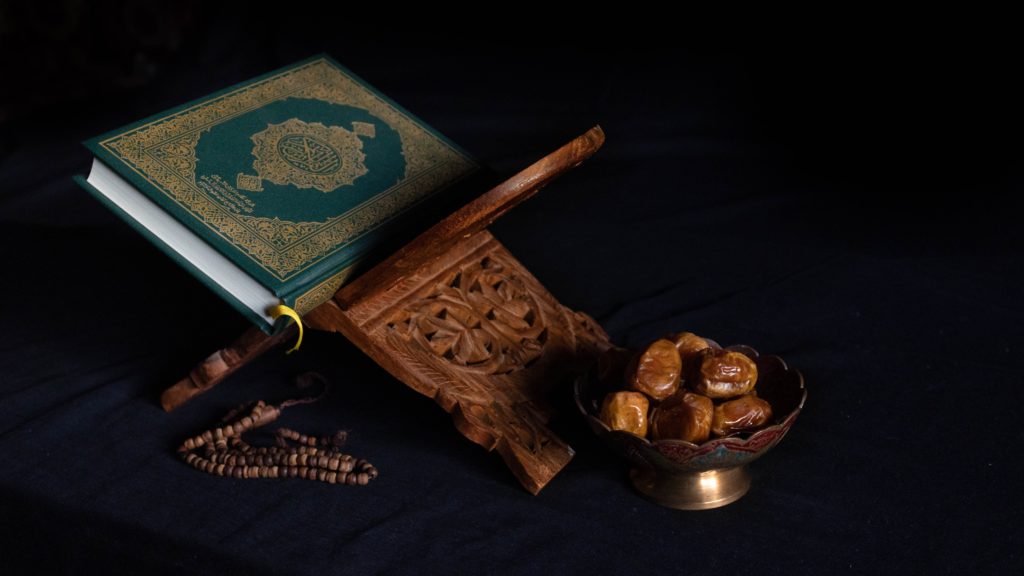It’s that time of the year again when water bottles and snacks disappear from desks, eateries become crowded close to sunset and some breaths become slightly more odoured. The blessed month of Ramadan is upon us.
The thought of surviving from sunrise to sunset without food and drink (and yes, that includes water too) can seem unfathomable to those that don’t understand the essence of this holy month.
The truth is though, for 99.9% of Muslims it’s our favourite time of the year and the month we most look forward to.
So for those that have always wondered about its significance or felt a little uncomfortable asking seemingly silly questions, Cape {town} Etc’s Tauhira Ajam offers a little guide to understanding the basics of Ramadan.
When does it start and when does it end?
Muslims follow a Lunar Calendar consisting of 12 months in a year of either 354 or 355 days. This is why Ramadan begins ten to 12 days earlier each Gregorian calendar year.
Ramadan marks the ninth and holiest month of the Islamic calendar. It lasts either 29 or 30 days, depending on when the new crescent moon is or should be, visible (we won’t get into the politics) with the naked eye.
How do we know whether the moon has been sighted or not?
There is a dedicated group of people called The Crescent Observers Society (affectionately called maankykers by local Muslims) that go out in search of the new crescent moon (hilaal in Arabic) on the 29th night of every Islamic month.
If the moon is sighted in any of the cities making up SA, the start of the new month (In this case, Ramadan) commences the next day for the whole country. If not, the current month (In this case, Sha’ban) will have a 30th day.
After much deliberation among the maankykers across the country, a decision is made and an announcement is broadcasted on the Voice of the Cape (VOC) and Radio 786, Cape Town’s local Islamic radio stations.
The same goes for Eid, which signifies the first day of the following month, Shawwal. This year, Eid will be celebrated on either 22 or 23 April.
The maankykers go out to various lookout points around sunset time. In the Cape, these include Oudekraal, Signal Hill, Soetwater, Stellenbosch and Three Anchor Bay.
Fun fact: If ever you would like to experience the electric atmosphere of the sighting of the moon, make your way to Three Anchor Bay on the 29th day of Ramadan. Hundreds of Muslims with picnic blankets and boeka treats gather to break their fast, make salaah (pray) together, try to spot the moon and hear the announcement via the VOC’s live broadcast.
Ramadan in a nutshell
In a nutshell, Ramadan is the period in which all Muslims fast from sunrise (approximately an hour and a half before, if we’re being technical) to just after sunset after the athaan (call to prayer) is heard.
The pre-dawn meal is referred to as suhoor or souwe, according to the Cape Malays. The breaking of the fast in the evening is called iftaar or boeka (again according to the Cape Malays). Boeka often begins with dates and water as the Prophet (Peace be Upon Him) did and ends with many savouries, traditional Cape Malay delights and a pretty bloated stomach.
After Eshai (the last of the five obligatory daily prayers), there is a special prayer that is performed in congregation at mosques every night of Ramadan called Taraweeh in which the entire Qur’an is recited in portions throughout the month.
Fun fact: To wish Muslims well for the blessed month, say “Ramadan Kareem” or “Ramadaan Mubarak”.
Who fasts and who doesn’t?
Fasting during the month of Ramadan forms part of the Five Pillars of Islam which makes up the foundation of the religion.
In part of a hadith which translates to a collection of sayings and practices of Prophet Muhammad (Peace be Upon Him), it is said: “Islam is built upon five; to worship Allah and to disbelieve in what is worshipped besides him, to establish [five daily] prayer, to give charity [zakaat], to perform Hajj pilgrimage to the house [of Allah in Mecca called the Kaaba] and to fast the month of Ramadan” (Sahih al-Bukhari 8).
So yes, it is compulsory for all healthy and postpubescent Muslims to fast.
There are, however, some who are exempt from fasting like those who are mentally or physically limited due to illness and old age as well as prepubescent children.
Pregnant, breastfeeding and menstruating women are also exempt from fasting. However, they need to make up the days they have missed before the start of the next Ramadan.
Why are there two Eids?
Eid al-Fitr, the “festival of the breaking of the fast”, celebrates the end of the blessed month. It begins with a special congregational prayer that takes place outdoors. The day continues with getting dressed up, visiting friends and relatives, gift exchanges, family feasts, and once again ends with pretty bloated stomachs.
Eid al-Adha (sometimes referred to as second Eid since it’s second on the calendar) is celebrated during the month of Dhul-Hijjah. This is the month when Muslims from around the globe make the pilgrimage (Hajj) to Mecca to fulfil another of the Five Pillars of Islam.
It is this Eid celebration in which Muslims slaughter sheep in commemoration of Allah’s mercy in sparing the Prophet Ibrahim (Abraham) from sacrificing his son.
Fun fact: To wish Muslims on this day, say “Eid Mubarak” which essentially means blessed celebration or blessed feast/festival
ALSO SEE: Food traditions from around the world
Written by Tauhira Ajam for Cape {town} Etc.
Feature image: Unsplash

